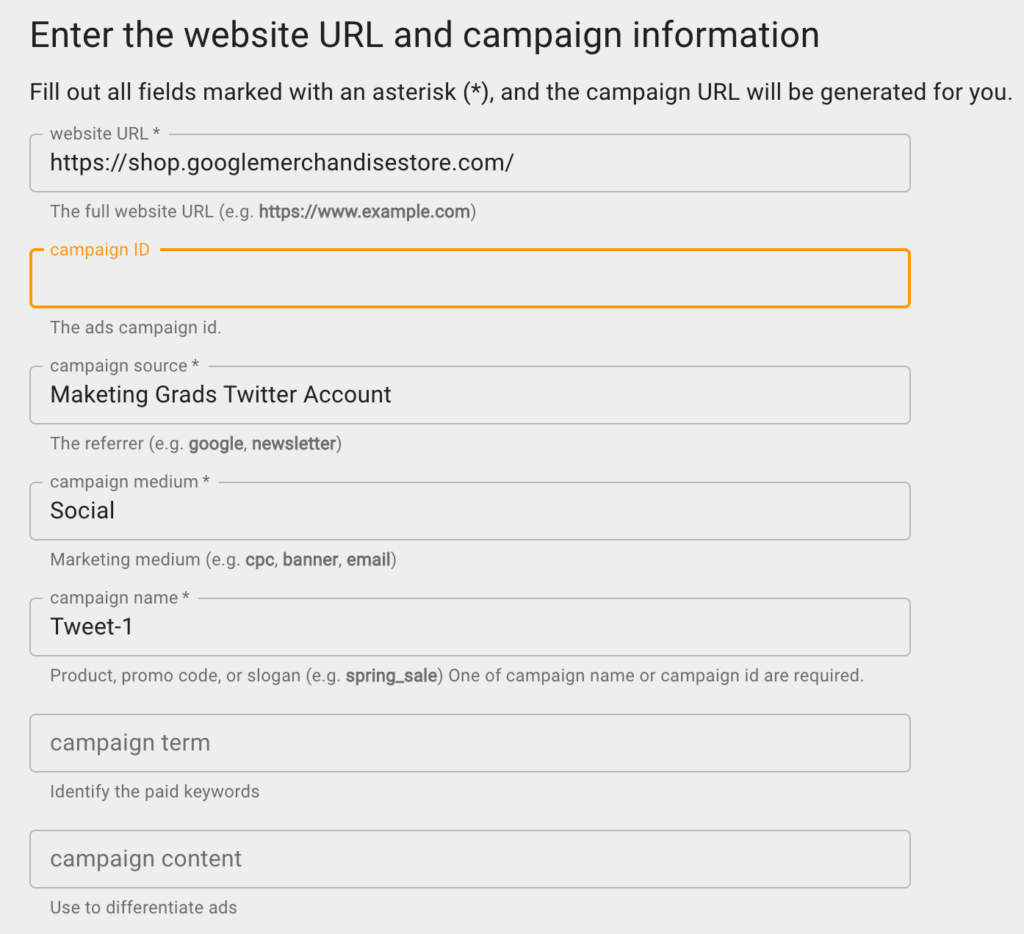
08 Aug Why Some Links Are So Long? A Complete Guide To UTM
This blog post will discuss an interesting (and easy, yay!) topic that finds relevance in all things digital. Email Marketing, Search Campaigns, Display Campaigns, Conversion Rate Optimization, Multivariate Testing, Social Media, Influencer Marketing, Content Marketing, etc. You get the point.
Before we dive deep into the topic, let’s have a look at a link that looks unusually long:
https://www.majortom.com/mercury-blog/fueling-your-inbound-marketing-with-shopify-?utm_campaign=MT%3A%20M%20-%20Shopify%20Inbound%20Marketing&utm_source=linkedin&utm_medium=paidsocial&utm_term=shopify%20inbound%20marketing%20&hsa_acc=503239764&hsa_cam=605854173&hsa_grp=185076523&hsa_ad=147653103&hsa_net=linkedin&hsa_ver=3
Now look at this link:
https://www.majortom.com/mercury-blog/fueling-your-inbound-marketing-with-shopify-
If you copy and paste these links in your browser, you’ll see that they go to the same landing page. Then why use the big ugly link when you can use the friendlier-shorter version?
Easy Answer: It helps.
But how?
Let’s see.
Link #1 uses something called UTM parameters. UTM stands for Urchin Tracking Module.
UTMs help you understand the original source of your web traffic based on 5 (sometimes 6) dimensions or parameters:
Source, Medium, Content, Campaign, and Term.
Have a look at the long and ugly link again and see if it gives you any information.
https://www.majortom.com/mercury-blog/fueling-your-inbound-marketing-with-shopify-?utm_campaign=MT%3A%20M%20-%20Shopify%20Inbound%20Marketing&utm_source=linkedin&utm_medium=paidsocial&utm_term=shopify%20inbound%20marketing%20&hsa_acc=503239764&hsa_cam=605854173&hsa_grp=185076523&hsa_ad=147653103&hsa_net=linkedin&hsa_ver=3
If you can read around the gibberish in the link, you will suddenly start to see how the long link gives you tons of information that the short link doesn’t.

We can clearly see that UTM parameters help us answer questions which can lead to more data and therefore, better attribution.
There’s always someone who goes contrary to the common belief and they might say that,
Google Analytics already shows where the traffic is coming from. So in this case, we would already know that the traffic comes from LinkedIn. Then where does UTM add value?
Fair point.
Let’s do a Q & A session to determine the importance of these UTM parameters. It would look something like this:
Q.1 Where did the click come from?
Answer: LinkedIn (This is an answer that Google Analytics can give irrespective of whether UTM Parameters were used or not)
Q.2 What was the medium of the click? Was it paid or organic?
Answer: Paid Social Campaign
Q.3 We are running 3 campaigns on LinkedIn Ads. Which campaign led to the click?
Answer: Shopify Inbound Marketing Campaign
It is impossible to find answers to Q.2 and Q.3 unless we use UTM.
Now it makes sense? Unified data with important information under the umbrella of one platform, i.e. Google Analytics. Thanks to UTM.
How Do You Make Links With UTM?
At this point, you would have already thought, “How do I make these links?”
Here’s the solution: Campaign URL Builder By Google.

Here’s the URL that I generated:
https://shop.googlemerchandisestore.com/?utm_source=Maketing+Grads+Twitter+Account&utm_medium=Social&utm_campaign=Tweet-1
And here’s my tweet in which I used the above link:

And here’s how it looks inside of Google Merchandise Store’s GA account (Real-Time Report)

Powerful, isn’t it?
Two Use-Cases For UTM
In the last section, I’ll explore two important use cases (other than paid display, search, or social campaigns) for these UTM parameters. This should really sell you on the idea of UTMs.
1. Email A/B Testing
Let’s consider a scenario where you’re running an A/B test on an email campaign. Now, this test is very peculiar in the way that you’re not sending two different emails, rather, you’re testing 2 different CTAs (call to action) in the same email.
You want to see which particular CTA was most clicked on.
Here’s an example:
This is an email that I received from Salesforce.

Hypothesis: The CTA at the end of the email would get more clicks when compared to CTA at the top because people want to read an email before taking action.
While configuring the emails, if we use different UTM parameters for both these clickable “Register Now” buttons, we can successfully defend or refute the hypothesis.
Here’s how Salesforce could configure the two links (Note: There are multiple ways to play around and configure your UTMs):
https://www.salesforce.com/ca/form/events/webinars/form-rss/?utm_source=Newsletter&utm_medium=email&utm_campaign=Digital_Commerce&utm_id=Canada_Webinar&utm_content=Top-Button
https://www.salesforce.com/ca/form/events/webinars/form-rss/?utm_source=Newsletter&utm_medium=email&utm_campaign=Digital_Commerce&utm_id=Canada_Webinar&utm_content=Bottom-Button
After this, the Salesforce marketers can go into their analytics and see which button people clicked on the most, and which button led to the most number of webinar registrations.
2. Influencer Marketing
MarketingGrads suddenly caught the eye of Jeff Bezos and he wanted to invest 10 million dollars in my newsletter. I was a bit hesitant at first because he was massively undervaluing my newsletter, but my mom convinced me to accept the offer.
During our first board meeting, Mr. Bezos suggested that I should hire Rihanna & Eminem to promote our newsletter.
I immediately said, “Yes” (shouldn’t have).
For every subscriber that directly comes from either of those celebrities’ accounts, we promised to pay them $50 each.
Now how to calculate how many subscribers did Eminem’s LinkedIn account get us Vs. Rihanna’s LinkedIn account?
You guessed it. UTM Parameters.
We just have to create 2 different links with UTM parameters (one for Rihanna and one for Eminem) that land on the same page, and just track how many subscribers we got from those links. This is exactly how referral purchases or sign-ups are tracked.
Here are the links that I created (you can try clicking on them if you want):
Eminem: https://marketinggrads.substack.com/?utm_source=LinkedIn&utm_medium=Influencer+marketing&utm_campaign=Eminem
Rihanna: https://marketinggrads.substack.com/?utm_source=LinkedIn&utm_medium=Influencer+marketing&utm_campaign=Rihanna
And here’s how it went for us:

We can clearly see that the partnership with Eminem was much more successful (it also cost us a fortune).
I hope that you guys finally understand the value of UTMs, especially after we almost spent 500 thousand dollars to explain why it is so important. You can now thank us by sharing this article/newsletter.
Do your bit.
You now understand why some links are so long and why the manufacturing of these long links is an important practice; especially for marketers.
To end this newsletter, here’s a trivia for you:
The name “Urchin” in Urchin Tracking Modules (UTMs) is the erstwhile name of Google Analytics. Google bought the company Urchin Software Corp in 2005 when the idea of tracking visitors through code added to URLs was cutting edge. Interestingly enough, UTM is the only place now where the name “Urchin” is retained.
Maybe Google wanted to pay homage to the founding fathers of Google Analytics?




Sorry, the comment form is closed at this time.